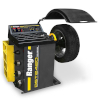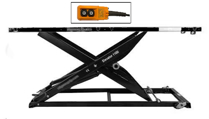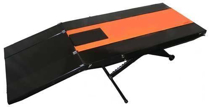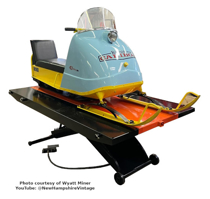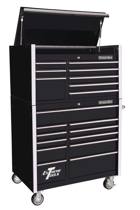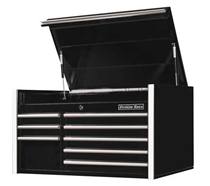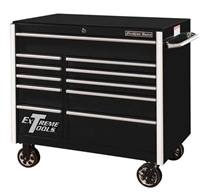Thanks to Dennis K., of Westford, MA, for forwarding a photo of the PRO lift in action!
We're happy the lift is working out for you! The PRO 1200 Motorcycle Lift in Action![/caption] "The lift is a great value. Clark was pleasant to deal with. In the future, I wouldn't hesitate to purchase from NHProEquip." Dennis K. Westford, MA
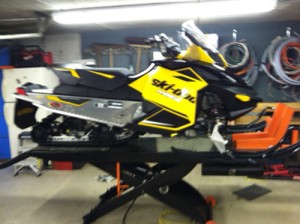

Clark Heintz Tools & Equipment LLC wishes everyone a Happy Thanksgiving! We hope you have a peaceful day with loved ones, filled with good food and good cheer! We are thankful for all of our great customers who keep us going every day.
Reposted from http://mceventscalendar.com (Or How To Get Invited To Go Riding Again) By Chuck Hawks Riding on a motorcycle with a friend is one of the most fun things you can do. It can be an even more enjoyable experience if the passenger understands and follows a few simple rules. To be the kind of passenger riders want to ride with, remember the following: 1. Wear clothing that will give you some protection in the unlikely event of a spill. As a minimum, you should wear the following to protect yourself: Footwear that protects your feet and your ankles (hiking boots are good). Durable pants–leather is best; lacking leather, you will have to make do with jeans, work pants, or something similar. An abrasion resistant jacket that zips or buttons up close to the neck (again, leather is best if you have it; a nylon flight jacket or parka are satisfactory, and a Levis-type jacket will do in a pinch). Durable gloves. Eye protection–ideally, the helmet you borrow or own should have a face shield for comfort as well as protection. If it does not, goggles are good, and glasses (dark or prescription) will do. 2. You should also attempt to dress appropriately for the weather. If you have not ridden very much, you probably do not realize how hot or how cold it can be on a motorcycle. If it is hot, it will feel a lot hotter while you are riding; if it is cold, it will feel a lot colder while you are riding. Ask the rider for advice about dressing for the anticipated conditions, but don’t compromise your minimum level of protection as described above. On hot sunny days, one trick is to wear an extra large white shirt over your jacket. It will reflect a lot of heat and help keep you cool. In general, it is easier to dress safely and comfortably for a cool day than for a hot one. Lastly, don’t wear anything loose and floppy (like a long scarf or bell bottom pants) that could get caught in the rear wheel, sprockets, drive chain or belt, or any other moving part of the motorcycle. You could injure yourself, and might cause an accident. 3. Wear a securely fastened helmet that fits properly. Most riders have extra helmets and will be glad to loan you one. A helmet should be a snug fit; it should not be possible to twist it around on your head. The strap should be pulled as tight as you can get it. You can test for fit, and to see if the strap is tight, like this: grasp the chinbar of a full coverage helmet, or the edge of an open face helmet directly over your forehead, and try to pull the helmet backwards off your head. If the helmet winds up on the back of your head, tighten the strap or get a helmet that fits. The rider can show you how to put on your helmet properly and easily (you kind of roll it onto your head from the front). If you ride often, you will eventually want to buy your own helmet. Just about any motorcycle shop can help you pick out a suitable helmet that fits you correctly. 4. Before you attempt to mount the motorcycle, make sure that the passenger footpegs are down. (They fold up when not in use, and it is easy for the rider to forget to put them down for you.) If you don’t know where the footpegs are, have the rider point them out to you. Also, beware of the hot exhaust pipes. Make sure you know where they are, and don’t let your leg or any part of your body touch them as you mount or dismount the motorcycle. They can give you a severe burn right through the heaviest pants. 5. It is customary to get on or off the motorcycle from the left side. Always wait for the rider to tell you it’s okay to mount or dismount. If you start to clamber on (or off) when the rider does not expect it, the sudden motion of the motorcycle will be disconcerting. You could even pull the motorcycle over, a big no-no. 6. Here is the best way to get on a motorcycle, and the method almost all passengers should use: extend your right leg over the seat, and then slide gently up onto the seat.Put your feet on the footpegs and you are onboard! If you are not able to do that because you are a tiny person or a child, this will work: put your left foot on the left passenger foot peg, lean your body way over the motorcycle, and gently step up until you can swing your right leg over the seat and ease yourself down. You must keep your body low and lean over the motorcycle as much as possible while you get on, to help the rider keep the motorcycle balanced. The weight of your body, if it is too far out of line with the weight of the motorcycle, could pull the bike over, still a big no-no. A person reasonably close to normal size (male or female) should not need to use this method to mount a motorcycle, and a heavy person should not attempt it under any circumstances. It is all a question of balance; the rider is not strong enough to force a big motorcycle to stay upright if you cause it to get out of balance. To dismount, just reverse the process you used to get on. With a little practice, getting on and off will become second nature. 7. Once you are on the motorcycle, plant your feet on the passenger footpegs and keep them there. You absolutely do not want to bring your foot into contact with the rear wheel, drive chain or belt, or the hot muffler. Never attempt to help the rider hold the bike upright when it is stopped. Keep your feet safe by keeping them on the foot pegs at all times. 8. Place your hands on the rider’s hips. That is the best way to hold on to the rider, and it keeps you in touch with the rider’s movements. Keep your weight centered over the motorcycle. Try not to move around any more than is necessary, particularly when the motorcycle is stopped, as it affects the balance of the motorcycle. 9. Motorcycles turn by leaning (banking like an airplane), not by steering like a car. So don’t be alarmed when the motorcycle leans over to go around a corner. To position yourself perfectly for a turn, just look over the rider’s shoulder in the direction of the turn. If the motorcycle is turning right, look over the rider’s right shoulder; if it is turning left, look over the rider’s left shoulder. You don’t have to do anything else; looking naturally over the rider’s inside shoulder will automatically put your weight right where it belongs in a turn. Keep your body in line with the rider’s body to prevent the motorcycle from leaning more than the rider intends. (When going straight, it doesn’t matter which shoulder you look over.) Never lean out of a turn; you could cause an accident that way, which is another big no-no. 10. When the rider puts on the brakes, it causes a forward weight transfer. If the rider is forced to break hard, as in an emergency, this forward weight transfer is very apparent; you will be forced against the rider, and you will start to slide forward on the seat. Don’t panic. Try to keep back, away from the rider. Resist sliding forward by pressing your feet against the footpegs; use your thigh muscles to control your position on the seat. If you slide forward, you force the rider forward, reducing the rider’s control over the motorcycle. It also moves the weight distribution of the motorcycle forward, reducing the weight on the rear tire and therefore the traction of the rear tire, making it more likely that the back tire will start to skid. Obviously, none of this is desirable. 11. You can be an active participant in the ride by staying alert and being prepared. Help the rider look for potential danger, and be prepared to hang on and hold yourself back if you anticipate a need for sudden braking. Likewise, if the rider is forced to swerve the motorcycle to avoid a hazard in the road, you need to be prepared for the sudden lean and change of direction. You can also help the rider scan for animals that may run into the road. Dogs and deer are particularly unpredictable, and you may see a deer on a hillside above the road, or a dog in somebody’s front yard, before the rider. (After all, the rider is concentrating primarily on the road.) If you spot a hazard of any sort that you think the rider is unaware of, rap the rider on the appropriate shoulder, and point at the hazard in a way that brings it to the rider’s attention.





